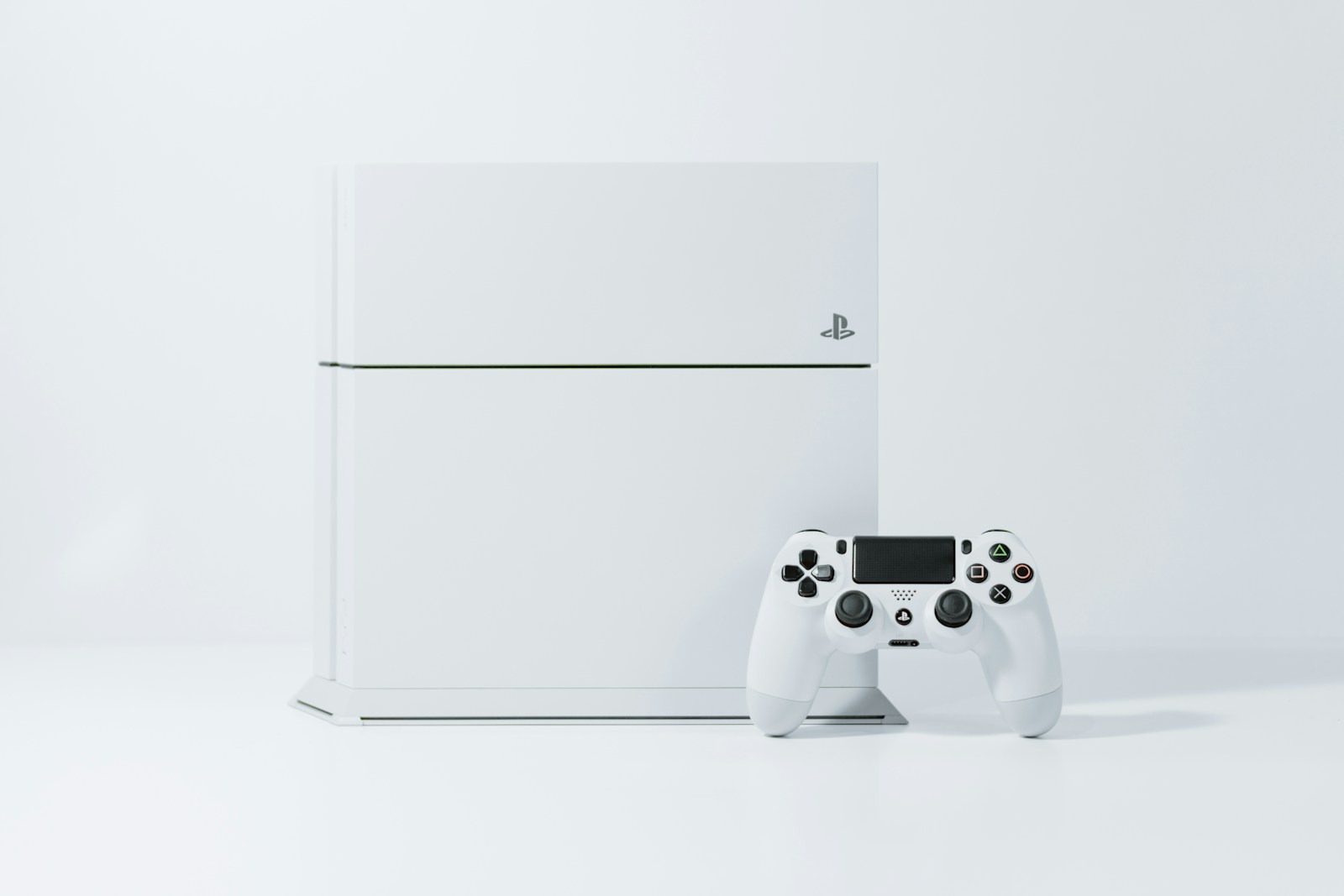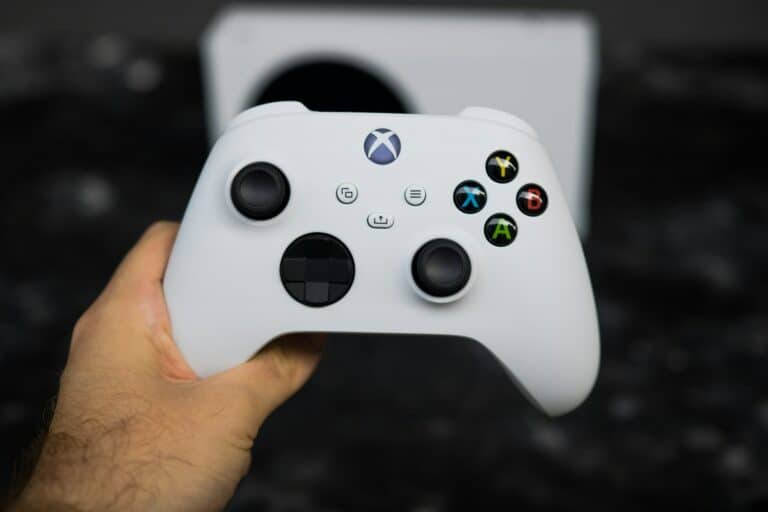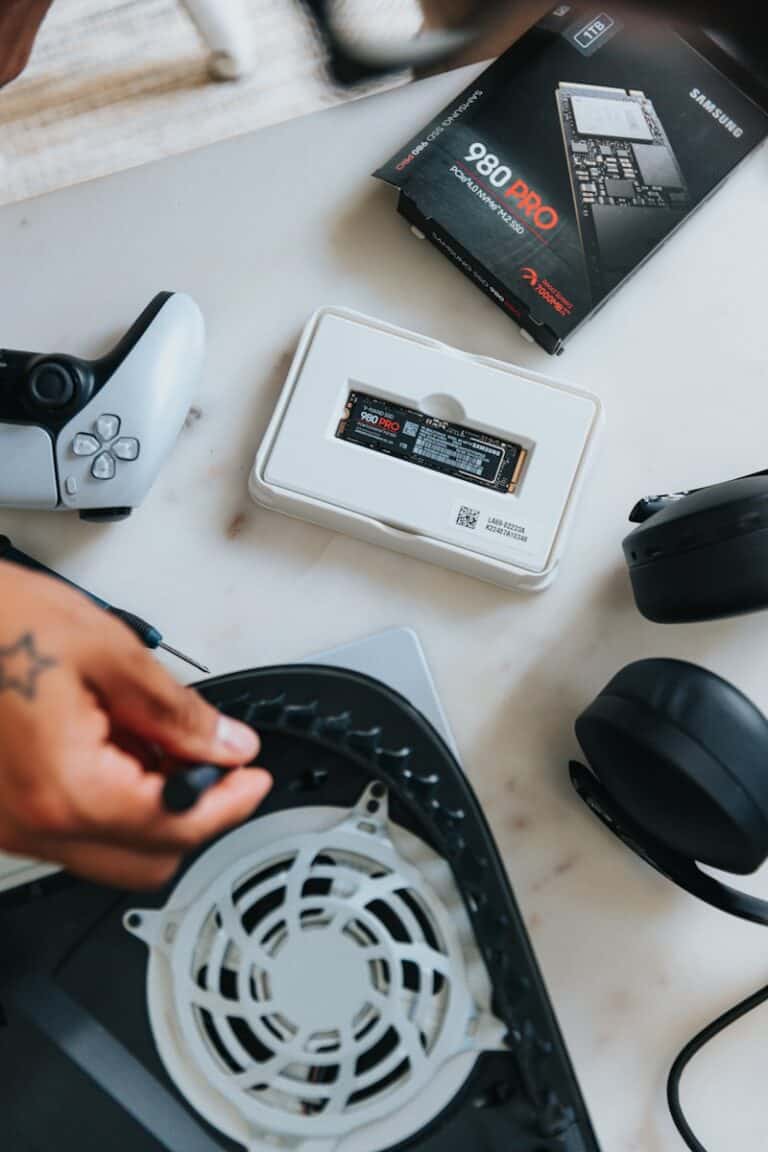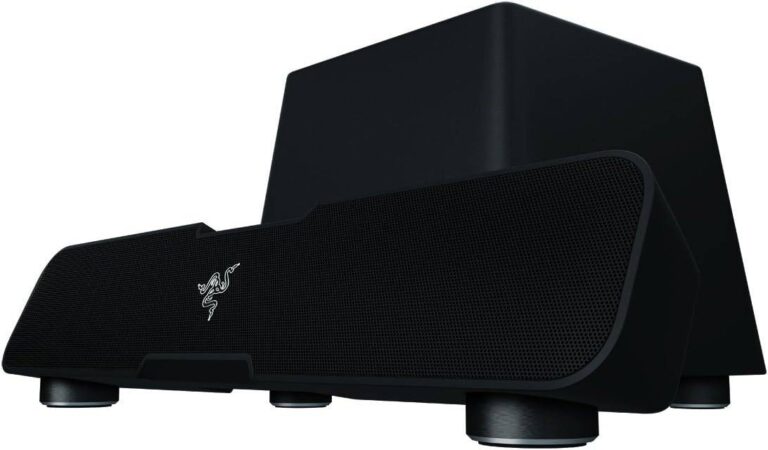
Gaming sessions can quickly turn frustrating when your PS4 controller stops working. Whether it won’t connect, won’t charge, or has stopped responding during gameplay, controller issues are common but often fixable without professional help. Most PS4 controller problems can be resolved by resetting the controller, checking the charging cable, or restarting your console.
If your controller turns on your PS4 but won’t operate it, or if it’s not charging or connecting at all, don’t worry. Many players experience these issues, and they’re typically caused by simple problems like low battery, connection interference, or software glitches. The good news is that you can try several troubleshooting steps at home before considering a replacement.
Let’s walk through the most effective solutions to get your controller working again and get you back to gaming as quickly as possible. Most fixes take just a few minutes and require no special tools beyond what came with your console.
PS4 Controller Not Working: Troubleshooting Guide
If your DUALSHOCK 4 controller isn’t connecting, charging, or responding properly, don’t worry—most issues can be fixed with a few simple steps.
1. 🔌 Check the Basics
Before diving into advanced fixes, make sure:
- The controller is charged (connect via USB for at least 30 minutes).
- The USB cable and port are working (try another cable or port).
- Your PS4 console is turned on and not in Rest Mode.
2. 🔁 Reset the Controller
A reset often resolves most connection or button issues.
How to reset your DUALSHOCK 4 (PlayStation Support):
- Turn off your PS4 and unplug it.
- Locate the small reset button on the back of the controller (near the L2 button).
- Use a paperclip or pin to press and hold the button for 5 seconds.
- Reconnect the controller to the PS4 using a USB cable and press the PS button.
3. 🔄 Re-Pair the Controller via USB
If the controller won’t connect wirelessly:
- Plug the controller into the PS4 with a USB cable.
- Press the PS button to pair it.
- Once connected, you can remove the cable and test wireless functionality.
If it still doesn’t connect, try using a different USB cable or port (source: Lifewire).
4. 🔋 Troubleshoot Charging Issues
If your controller won’t charge:
- Try another USB cable or wall charger.
- Clean the charging port gently with compressed air or a soft brush.
- Avoid charging through low-power USB ports (like TV or PC).
- If the light bar doesn’t glow amber when charging, the battery or port might be damaged (source: CyberFanatix).
5. 📶 Fix Bluetooth or Wireless Issues
If you can’t connect via Bluetooth:
- On the PS4, go to Settings → Devices → Bluetooth Devices.
- Delete any existing controller profiles.
- Reset the controller (as above).
- Re-pair it via USB.
If connecting to another device (like a PC or phone), make sure the controller isn’t already paired to the PS4 (source: EasyTechSolver).
6. 🧠 Check for Firmware or Software Problems
- Update your PS4 system software to the latest version.
- Boot into Safe Mode and rebuild the database if the controller still doesn’t respond.
- If using on a PC, ensure the correct drivers are installed.
7. ⚙️ Hardware Problems
If none of the above works, you might have:
- A damaged battery or charging port.
- Faulty buttons or joysticks (common after drops).
You can open and repair the controller yourself with a guide like iFixit’s DualShock 4 Troubleshooting or contact PlayStation Support for professional repair or replacement.
✅ Summary
| Problem | Likely Fix |
|---|---|
| Controller won’t connect | Reset and re-pair via USB |
| Controller won’t charge | Try new cable/port, clean charging port |
| Buttons not responding | Reset controller or check for hardware damage |
| Bluetooth not working | Remove old pairings and re-sync |
| Light bar not turning on | Check battery or internal connection |
💬 Final Tip
Always keep your controller’s firmware and console software updated, and store your controller in a cool, dry place to extend its lifespan.
Sources:
- PlayStation Support – Troubleshoot DUALSHOCK 4
- Lifewire – PS4 Controller Won’t Connect
- CyberFanatix – Why Your PS4 Controller Is Not Working
- iFixit – DualShock 4 Troubleshooting
Key Takeaways
- Reset your controller using the small button on the back and reconnect it with a USB cable to fix most connection issues
- Restart your PS4 by holding the power button until you hear the second beep to resolve system-related controller problems
- Check your charging cable for damage and try different USB ports on your console if your controller won’t charge or pair
Identifying the Issue
When your PS4 controller stops working, finding the exact problem is the first step toward fixing it. Controllers can fail in different ways, each requiring specific solutions.
Unresponsive PS4 Controller
If your controller doesn’t respond to button presses, several issues might be causing the problem. First, check if any buttons are physically stuck. This happens often with heavily used controllers and can be fixed by gently cleaning around the button edges.
Try resetting your controller by locating the small reset button on the back near the L2 button. Use a paperclip to press it for about 5 seconds.
Sometimes the problem is software-related. Your PS4 might need a system restart to recognize the controller properly. Turn off your console completely (not rest mode) for 30 seconds, then restart it.
If your controller works with some games but not others, the issue might be with specific game software rather than the controller itself.
PS4 Controller Not Charging
When your controller won’t charge, first check the basics. Try a different charging cable as micro-USB cables frequently wear out and stop working properly.
Test multiple USB ports on your PS4. Front ports sometimes fail while the rear ones continue working. You can also connect to a wall charger to determine if the problem is with your console’s USB ports.
The charging port on the controller itself might be damaged. Look closely for bent pins or debris inside the port. Clean it carefully with compressed air.
Battery issues are common in older controllers. If your controller only holds a charge for a short time or won’t charge at all, the internal battery might need replacement.
PS4 Controller Connectivity Problems
Connectivity issues often involve Bluetooth problems. Your controller might pair but frequently disconnect or have input lag during gameplay.
To fix this, try pairing your controller directly with a USB cable. Press the PS button while connected to establish a fresh connection.
Interference from other Bluetooth devices can cause problems. Try turning off nearby wireless devices like phones, tablets, or Bluetooth speakers.
Distance matters too. Sit closer to your console if you notice connectivity dropping when you move farther away.
If you use your controller on both PS4 and PC, it might be stuck in PC mode. Connect it with USB and hold the PS button and Share button simultaneously for 10 seconds to reset the connection.
Troubleshooting Power Issues
When your PS4 controller won’t turn on, power-related problems are often the culprit. These issues typically stem from either faulty charging cables or battery problems within the controller itself.
Checking the Charging Cable
Start by examining your PS4 controller charging cable. A damaged cable won’t deliver power properly, even if your controller’s battery is fine.
Try these steps:
- Check for visible damage like fraying, bending, or exposed wires
- Clean the USB connectors on both ends using a dry cloth
- Test multiple USB ports on your PS4 console
- Use a different charging cable that you know works with other devices
If your controller doesn’t light up when connected, try charging it for at least 30 minutes. Sometimes completely drained batteries need time before showing signs of charging.
You can also connect your controller to a computer or wall charger to verify if the cable works. If it charges elsewhere but not on your PS4, your console’s USB ports might be the issue.
Inspecting the Wireless Controller Battery
If cable troubleshooting doesn’t work, your controller’s battery may be the problem. Controllers that won’t hold a charge or power on might have worn-out batteries.
To reset your controller and potentially fix battery issues:
- Locate the small reset button on the back of your controller (near the L2 button)
- Use a paperclip or pin to press and hold it for 5-10 seconds
- Reconnect your controller to the PS4 with a USB cable
- Press the PS button to re-pair it
If resetting doesn’t work, your battery may need replacement. This is often cheaper than buying a new controller. You can purchase replacement batteries online or at electronics stores.
For emergency use, you can keep your controller connected via USB cable even with a bad battery. This bypass allows you to play while connected to power.
Troubleshooting Connectivity Issues
When your PS4 controller won’t connect, several common issues might be causing the problem. These can often be fixed with simple steps that reset connections or establish alternative connection methods.
Resetting the Bluetooth Connection
If your PS4 controller is blinking white but not connecting, you likely need to reset the Bluetooth connection. This is one of the most common fixes for connectivity problems.
To reset your controller, locate the small reset button on the back near the L2 shoulder button. You’ll need a paperclip or similar small tool to press it. Hold the button down for about 5 seconds, then release.
After resetting, try to re-pair your controller with your console. Connect it using a USB cable and press the PS button. This process is sometimes called a “soft reset” and often resolves connection issues.
If the controller still won’t connect, try booting your PS4 into safe mode. Power off your console completely, then hold the power button until you hear a second beep. This takes about 7 seconds. Your PS4 will start in safe mode, and you can connect your controller with a USB cable.
Using a USB Cable for Connection
Sometimes wireless connectivity fails completely, and using a USB cable becomes your best option. Not all cables work properly for this purpose, so testing different ones is important.
First, ensure you’re using a data transfer USB cable, not just a charging cable. Many micro-USB cables are charge-only and won’t establish the proper connection needed for controller pairing.
Try connecting your controller directly to the PS4 with the cable and press the PS button. Check for loose connections at both ends of the cable. If the controller still doesn’t respond, try a different USB port on your console.
Battery issues can also prevent connections. If your controller’s battery is completely drained, it might need several minutes of charging before it will respond. Let it charge for at least 30 minutes before attempting to use it.
Troubleshooting with Windows 10
You can use your Windows 10 computer to test if your controller is functioning properly, which helps determine if the problem is with the controller or the console.
Connect your PS4 controller to your Windows 10 PC using a USB cable. Windows should automatically recognize it as a gaming device. Open the Control Panel, navigate to “Devices and Printers,” and look for “Wireless Controller” in the devices list.
If Windows recognizes your controller, test the buttons and joysticks using the “Game Controllers” testing utility. Access this by right-clicking on the controller in Devices and Printers and selecting “Game controller settings.”
If your controller works on PC but not on PS4, your console’s Bluetooth system might be the issue. You can try adding the controller as a Bluetooth device on your PS4 by going to Settings > Devices > Bluetooth Devices > Add Device.
Resetting the PS4 Controller
If your PS4 controller isn’t responding correctly, a reset can often fix connection issues, input lag, or other performance problems. This troubleshooting method clears temporary glitches without affecting your saved games.
Using the PS4 Controller Reset Button
The PS4 controller has a small reset button hidden on the back. You’ll need to locate this tiny hole near the L2 shoulder button. This button isn’t meant to be pressed with your finger, so grab a thin object like a paperclip or something similar.
To reset your controller, turn off your PS4 completely. Flip your controller over and find the small hole on the back. Insert your paperclip and press the button for at least five seconds. The light bar on your controller should stop flashing, indicating the reset is complete.
This method clears the controller’s memory and breaks any existing connections, which often resolves many common issues.
Step-by-Step Controller Reset Guide
- Turn off your PS4 console completely (not just rest mode)
- Unplug your controller from any cables
- Locate the reset button in the small hole on the back of your controller
- Insert a paperclip into the hole
- Hold the reset button for at least 5 seconds
- Reconnect your controller to the PS4 using a USB cable
- Press the PS Button to establish the connection
If the standard reset doesn’t work, try an alternative method: press and hold both the PS button and Share button simultaneously until the light bar flashes rapidly. This puts your controller in pairing mode.
After resetting, always reconnect your controller using a USB cable before trying wireless connections again. This reestablishes the proper link between your controller and console.
Software and Firmware Issues
Software issues often prevent PS4 controllers from functioning properly. These problems can stem from outdated firmware or incorrect driver installation, especially when using controllers with a PC.
Updating Controller Firmware
When your PS4 controller stops working, outdated firmware could be the culprit. Sony regularly releases updates to fix bugs and improve performance. To update your controller firmware:
- Connect your controller to the PS4 using a USB cable
- Go to Settings > Devices > Controllers
- Select Update System Software if available
If you’re experiencing connection problems after a system update, try resetting your controller. To do this, locate the small reset button on the back of the controller near the L2 button. Press it with a paperclip for about 5 seconds.
Some users have reported connection issues after firmware updates. If this happens, try booting your PS4 in safe mode and reconnecting your controller.
Reinstalling Device Drivers on PC
When your PS4 controller won’t work on Windows 10, driver problems are usually to blame. Windows might not recognize your controller properly or could be using incorrect drivers.
To fix driver issues:
- Press Windows + X and select Device Manager
- Expand the USB Drivers section
- Right-click on your controller or USB devices
- Select Update driver
If updating doesn’t work, try uninstalling the driver completely and reconnecting your controller. Windows should install fresh drivers automatically.
For Bluetooth connections, make sure your PC’s Bluetooth drivers are also up to date. Sometimes you’ll need to remove the controller from your Bluetooth devices list and pair it again.
Additional Tips and Tricks
Beyond basic troubleshooting, there are several important aspects of PS4 controller maintenance and functionality that can help prevent issues. Understanding how buttons work and keeping your controller clean can significantly extend its lifespan.
The Role of the PS Button and Share Button
The PS button and Share button are critical components of your PS4 controller that often cause problems when they malfunction. If your PS button isn’t responding, it can prevent your controller from connecting to the console.
Try these PS button troubleshooting steps:
- Press and hold the PS button for 10-15 seconds to force a reset
- If the light bar flashes but doesn’t connect, try resetting your controller with the reset button on the back
- Check for firmware updates for your controller through your PS4 settings
For Share button issues, verify the button isn’t physically stuck. Sometimes debris can cause buttons to become unresponsive. Try pressing it firmly several times to dislodge any particles.
Cleaning and Maintenance of the PS4 Controller
Regular cleaning prevents many common PS4 controller issues. Dust, dirt, and sticky residue can affect button responsiveness and cause drift problems.
Cleaning supplies you’ll need:
- Compressed air can
- Isopropyl alcohol (70-90%)
- Cotton swabs
- Microfiber cloth
For regular maintenance, wipe down your controller with a slightly damp microfiber cloth after gaming sessions. For deeper cleaning, use compressed air to blow out dust from button crevices and around analog sticks.
Pay special attention to the charging port. Dust accumulation here can prevent proper charging. Use a dry cotton swab to clean this area gently. Never use excessive moisture on electronic components or submerge your controller in any liquid.
Your controller’s battery life will also improve with proper charging habits. Avoid letting it completely drain before recharging.
Frequently Asked Questions
PS4 controller issues can be frustrating but most problems have simple solutions. These common questions address the most frequent controller troubles players encounter.
Why won’t my PS4 controller charge when plugged in?
When your controller won’t charge, first check if you’re using a working USB cable. Many charging problems stem from damaged cables that look fine externally.
Try connecting to a different USB port on your PS4. The front ports sometimes become less reliable over time.
The charging port on your controller might be damaged or have dust buildup. Gently clean it with compressed air or a toothpick to remove debris that might block the connection.
Your controller’s battery might be completely drained. Leave it connected for at least 30 minutes to begin charging from a fully depleted state.
What could be causing my PS4 controller to fail to turn on?
A depleted battery is the most common reason controllers won’t power on. Connect it to your console with a USB cable for at least 30 minutes.
The controller might need a reset. Look for the small reset button on the back of your controller near the L2 button and press it with a paperclip.
Internal connection issues can prevent power-up. This sometimes happens after dropping the controller or after extended use.
Sometimes controllers won’t turn on due to software conflicts. Try resetting your controller and reconnecting it to your console.
How can I reset my PS4 controller, and will this resolve connection issues?
To reset your controller, locate the small reset button in a tiny hole on the back. Use a paperclip to press and hold it for 5-7 seconds.
After resetting, connect your controller to the PS4 with a USB cable and press the PS button to re-pair it. This process is also known as a soft reset.
Resetting resolves many common connection problems by clearing the controller’s memory and establishing a fresh connection to your console.
This fix works for approximately 80% of wireless connection issues, especially when controllers randomly disconnect during gameplay.
What steps should I take if my PS4 controller won’t connect after being reset with a USB cable?
Try using a different USB cable that supports data transfer, not just charging. Some cables only provide power without data connectivity.
Power off your PS4 completely (not rest mode) and restart it. This refreshes the console’s Bluetooth connections.
Check if your controller works on another PS4 console. If it does, your console’s Bluetooth module might be malfunctioning.
Try connecting in Safe Mode by turning off your PS4, then holding the power button until you hear two beeps. Connect your controller via USB and press the PS button.
Why does my PS4 controller seem to operate in charging mode but remains unresponsive in-game?
The controller might be connected to another device nearby. PS4 controllers can remain paired to smartphones, tablets, or PCs.
Background applications on your PS4 might be causing interference. Restart your console to clear temporary memory issues.
Your controller might need recalibration. This sometimes happens after using the controller with other devices or after system updates.
Hardware problems inside the controller, like worn joystick sensors, can cause this behavior. Button presses register but don’t translate to in-game actions.
After a PS4 system update, what troubleshooting methods can I follow if my controller isn’t working?
Connect your controller using a USB cable and reset it by pressing the reset button on the back. Then try to re-pair it.
Boot your PS4 in Safe Mode by powering off completely and holding the power button until you hear two beeps. Option 7 lets you reinstall system software.
Check for additional updates by connecting to the internet using another input method if possible.
Consider rebuilding your database (Option 5 in Safe Mode). This reorganizes your system files without deleting games or saved data.






